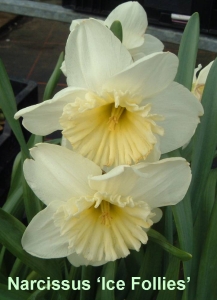Genus

Every species of plants (or bird or butterfly or beetle) has two parts to its Latin name.
The first is the genus, or
group to which it belongs, and the second name defines the species – the precise member of the group. So
all the bulbs that we know as daffodils and narcissi actually belong to the genus Narcissus, and
primroses and all their relatives around the world have names that begin Primula.

Often these genus names have become commonly accepted in English, as in the case of Daphne,
Rhododendron, Crocus and Delphinium. In other cases there is just a minor difference in the ending of
the Latin word, as in Rosa (rose), Tulipa (tulip) and Thymus (thyme). But in other
cases the words are completely different, so oak trees are Quercus and snowdrops
Galanthus. Tough!
Just as the genus is divided into species, sometimes hundreds of them, so related genera (the plural
of genus) are grouped in families. These are part of the structure that helps
to show the relationships between similar organisms, and simplifies our task of keeping track of and
learning about them.
Name changes are unfortunately inevitable. As scientists discover more
about plants, they sometimes find that some may be more similar than had previously been realised, or
may perhaps be more distantly related than had been supposed. These changes are not made lightly, and a
newly proposed name will not be generally accepted unless there is a consensus that it is necessary.

